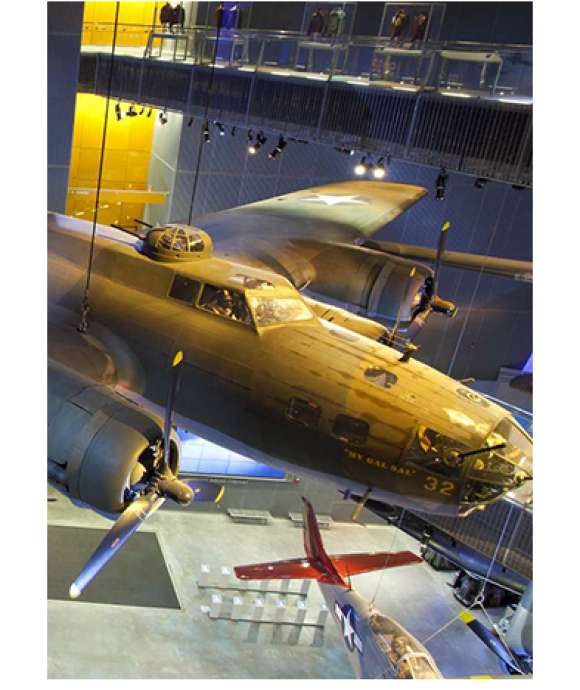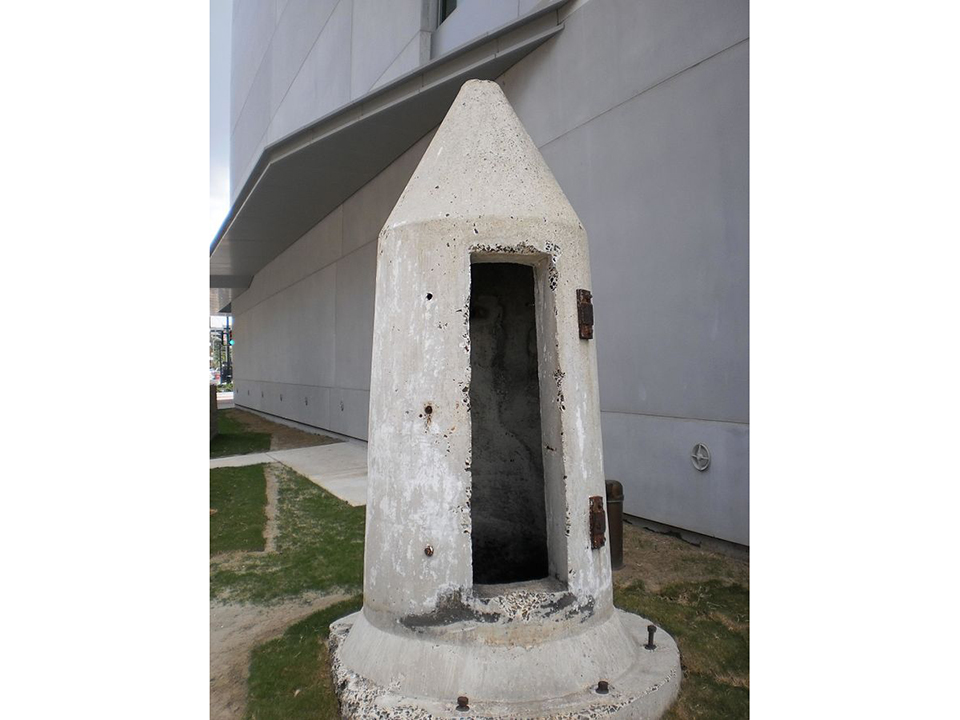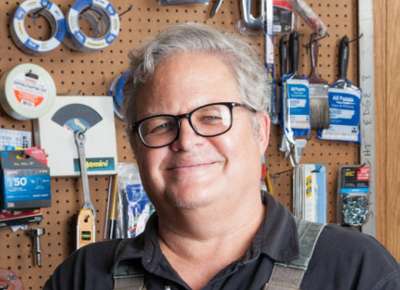In the 20 years since it opened, The National WWII Museum has amassed a considerable collection of over 250,000 artifacts and 10,000 personal accounts. Many separate collections make up the larger collection. I would like to take a moment to share with you the story of one of those collections.
Founded in 1991, The National D-Day Museum, later The National WWII Museum, began with artifacts and personal accounts that had been collected by the late Dr. Stephen Ambrose. In 1994, while still in the planning stages, the Museum acquired an outstanding collection: The Museum of the Liberation in St. Lo, France was going out of business and offered its collections for sale to the Museum.
After World War II, small private museums appeared in many places across Western Europe. Often started by young men who scoured the woods and fields, picking up the left over bits and pieces of the war, these museums concentrated on the story of the war in their local areas. One of these was The Museum of the Liberation. By the mid 1990s interest in the war was fading, and the owner decided to sell his collection. With the assistance of a generous donor, the Museum acquired over 1,500 artifacts.
The collection contained material from the whole Normandy campaign, from the landing beaches to the hedgerows, and finally to the breakout at St. Lo. This material would have been impossible to acquire individually. Many items—all manner of artifacts from uniforms and weapons to toothbrushes—had been held for over 40 years. The St. Lo collection’s size, range, and provenance made it invaluable to the new National D-Day Museum.
Some of the rarest artifacts in the collection are those that once existed in great numbers: for example, cardboard ration boxes and wooden shipping crates. It is easy to forget how much material was required just to ship all the supplies made in America to the soldiers in Europe. During the war, supplies were made up into bundles that could be lifted by one or sometimes two men. Without cargo containers as we know them today, all of this material would be loaded into ships and each package individually handled. One hundred and five mm artillery shells were packed two per box. Millions of 105 mm rounds were fired, and yet the crates they came in are rarely found today. Cardboard boxes containing rations are even rarer. Easily burned, they were often used in small fires to heat the rations.
The collection also contains Axis and Allied equipment. By comparison, American material is relatively easy to find, especially in this country. This collection had a great many German artifacts, ranging in condition from like new to relics. One longtime favorite of mine is a flak glass: basically a large pair of binoculars mounted on a tripod. This set came in a fitted wooden case with all the accessories, like new. It is amazing to see the detail that went into this piece of equipment.
Many of the Museum’s Allied uniforms come from this collection, including several examples of British uniforms and the Museum’s only example of a Free French Forces uniform (many American service men and women have donated to the Museum’s collections, but it is rare to receive donations from Allied veterans.)
Although the collection contains small items like unopened packs of cigarettes and match books, it also contains larger items, including two cars, a motorcycle, a listening device for locating aircraft and two concrete bomb shelters. There are also portions of a German nebelwerfer or rocket launcher in relic condition. The cars are examples of civilian models pressed into service by the German military. An Opal sedan is included in the Battle of the Bulge exhibit, while a Mercedes Benz sedan has been featured at the Land, Sea, and Air Expo on several occasions.
Air Raid Shelter Air Raid Shelter from the St. Lo Collection formerly on exhibit at The National WWII Museum. Courtesy of Nolabob.
Artifacts from the St. Lo collection helped fill out the Normandy exhibits when the Museum opened. Additional artifacts were placed on exhibit in the Road to Berlin. Many artifacts from the collection are currently on exhibit and the collection continues to be a source of artifacts for new exhibits.
MVC Nebelwerfer in storage at The National WWII Museum from the St. Lo Collection.

Building Collections, Remembering Lives: 20 Years of Collecting at The National WWII Museum
As The National WWII Museum celebrates year 20, we look back at some collection highlights.
Tom Czekanski
Cite this article:
MLA Citation:
APA Citation:
Chicago Style Citation:



![Max Fuchs, New York City cantor, sings as Rabbi Sydney [sic] Lefkowitz, Richmond, VA, conducts the first Jewish services from Germany.](/sites/default/files/styles/max_650x650/public/2025-10/image1.jpg)






